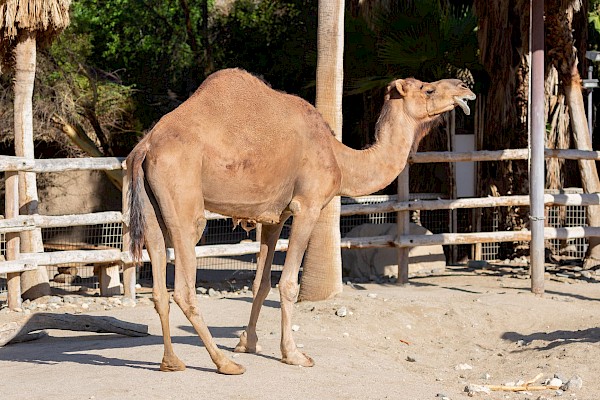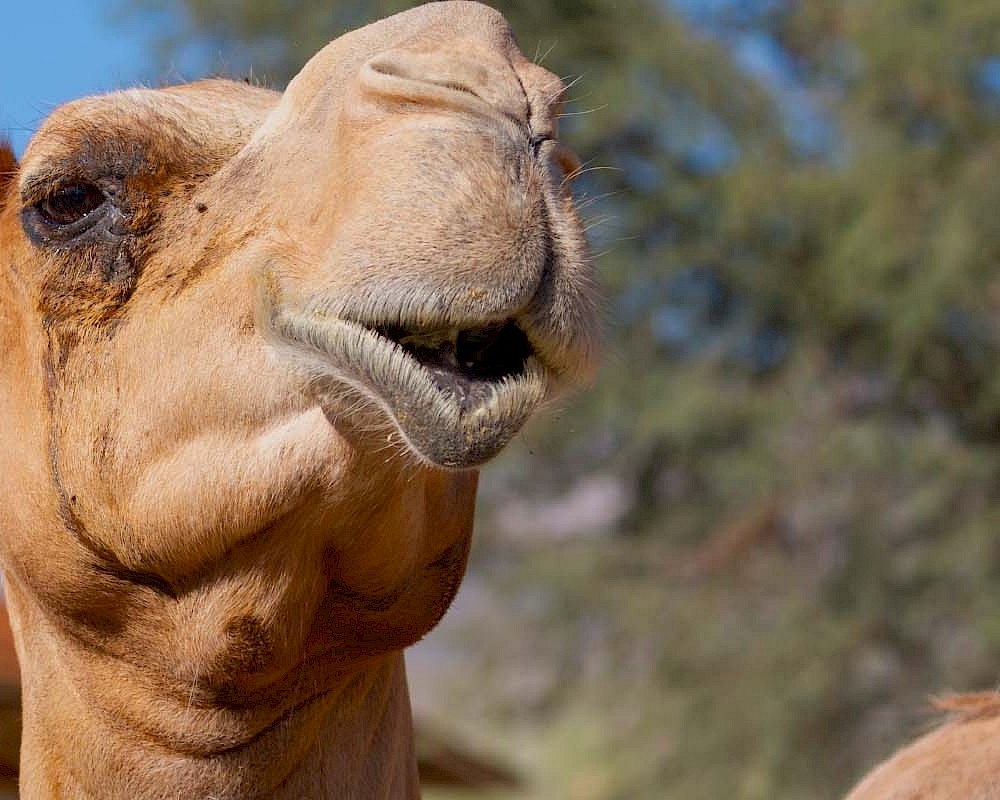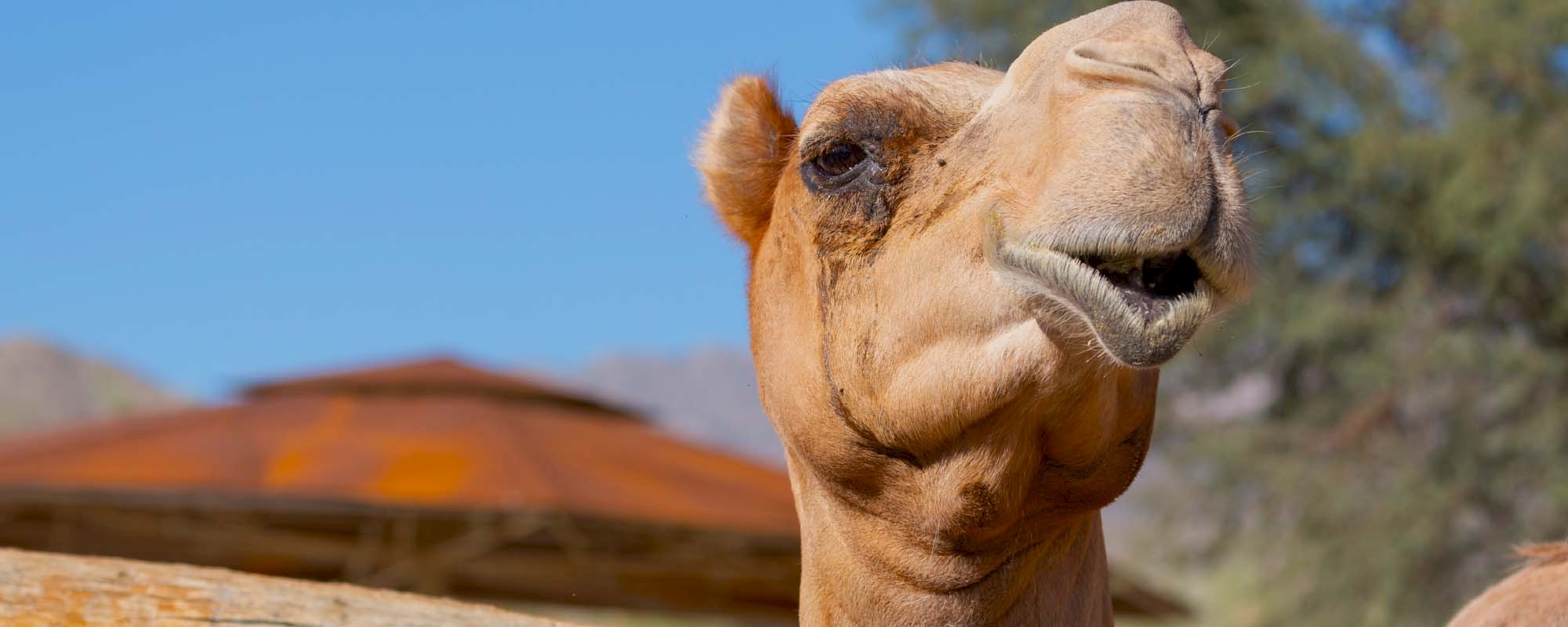

Dromedary Camel
Camelus dromedariusFamily
Camelidae; the camel, llama and alpaca family.Conservation Status
Not threatened. Domesticated and widespread.Range
The Middle East through northern India and the Sahara Desert.Habitat
Deserts.Highlights
Dromedary camels were introduced to arid regions of central Australia, where some of the only feral populations now persist.Dromedary camels have a single hump composed of fat, which stores food for times of need and lips that are thickened to allow consumption of thorny plants. They are caramel or sandy brown in color; but can range from almost black to nearly white. Their hair is longer on the throat, shoulder and hump areas. Their left and right legs move in unison, giving them a rolling gait and distributing weight to the soles of their feet rather than the toe tip like other ungulates. Their splayed feet are callused for walking on hot sand, and long eyelashes, bushy eyebrows, sealing nostrils and fur-lined ears protect against sandstorms.
Dromedary Camels can eat a variety of vegetation, including dry, thorny plants, and can drink as much as 30 gallons of water in a short period. They can survive up to 10 months without free water and a water loss exceeding 40 percent of body weight. The fat reserve stored in their hump serves as energy when they go for long periods without food.
Dromedary Camels can mate throughout the year, but peak births coincide with the season of maximum plant growth. They give birth to one offspring after a 13-month gestation.









